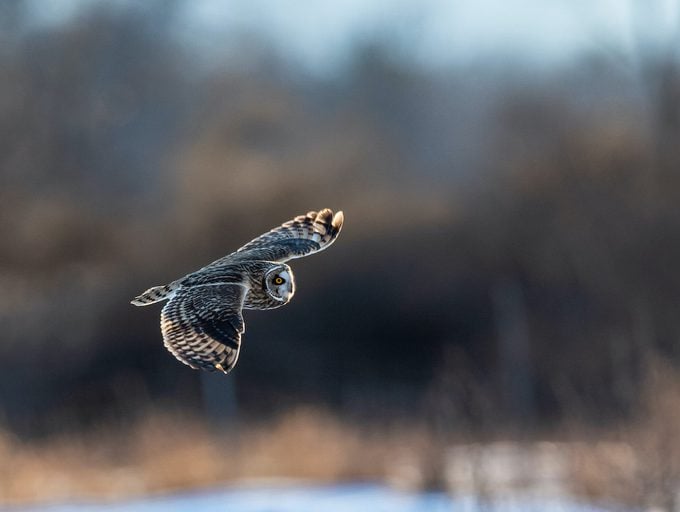Discover the secret life of these formidable predators and dispel some of the biggest owl myths and falsehoods.

Uncover the Facts Behind Common Owl Myths

On This Page
The Secret Life of Owls

My love affair with owls bloomed slowly. In fact, until recently, they terrified me—I wanted to be nowhere near their hooked beaks, sharp talons and wide eyes. My phobia peaked when I shared a campsite with a family of screech-owls and imagined that an attack was imminent. But a certain book about young wizards with pet owls peaked my curiosity, and I soon became completely enamored of these birds.
Owls live on every continent except Antarctica. What’s more, from France to Australia, many of our ancestors were intrigued enough to include wise or ominous owls in their legends. No matter what role they’ve played in human minds, owls have led a secret life all their own—until now. We’re here to set the record straight on common owl myths.
Myth 1: All Owls Are Nocturnal

Although horror movies suggest that owls are active exclusively at night, this one of our owl myths just isn’t true. Some, including great gray and northern hawk owls, are diurnal, meaning they’re awake during the day.
If food is scarce, owls hunt around the clock. In times of plenty, they cache their prey by stashing extra in and around their nests.
Myth 2: Male and Female Owls Are Identical

Plumage is the same in most owl species, but some variations occur. Female snowy and barn owls have more dark spots than the males.
Size is another story. Females are almost always bigger than males, surpassing them by as much as 40 percent in some species. The reason is a bit of a mystery, but most ornithologists agree that a bigger body allows for better nest protection as well as greater egg production.
Myth 3: Owls See in Complete Darkness

Huge eyes do make for excellent vision in low light, but owls can’t see in the dark. Generally, diurnal owls use their eyesight more than nocturnal owls, and for most, sight is secondary to hearing.
An owl’s facial disk, resembling a satellite dish with funnellike indentations around each eye, helps channel the quietest of sounds to its ears. Once the owl pinpoints the prey’s location, it stealthily flies toward the sound, adjusting its flight path to accommodate obstacles and keeping its face pointed at its destination. Then, snap! The owls talons lock around its next meal.
Myth 4: Owls Hate Water

In reality, many owl species have been observed bathing and drinking in lakes and streams, and some smaller ones have even been spotted in birdbaths. Waterlogged feathers can make flying difficult, so, like most birds, owls are armed with a gland that releases a protective oily substance, distributed through preening.
Myth 5: All Owls Live in the Woods

While many species do live in forests, several species—short-eared and snowy owls included—make their homes in more open landscapes. The grassland-dwelling burrowing owl is the single North American species that actually lives underground.
Some owls aren’t particular about where they nest. Elf owls take up residence in cacti, agave stalks and even utility poles, while barn owls roost in a variety of buildings. Of course, habitat determines diet, too, so although rodents are the most popular prey, owls also hunt fish, insects, reptiles and other birds.
Once you finish reading about owl myths, check out more amazing owl facts you should know.

